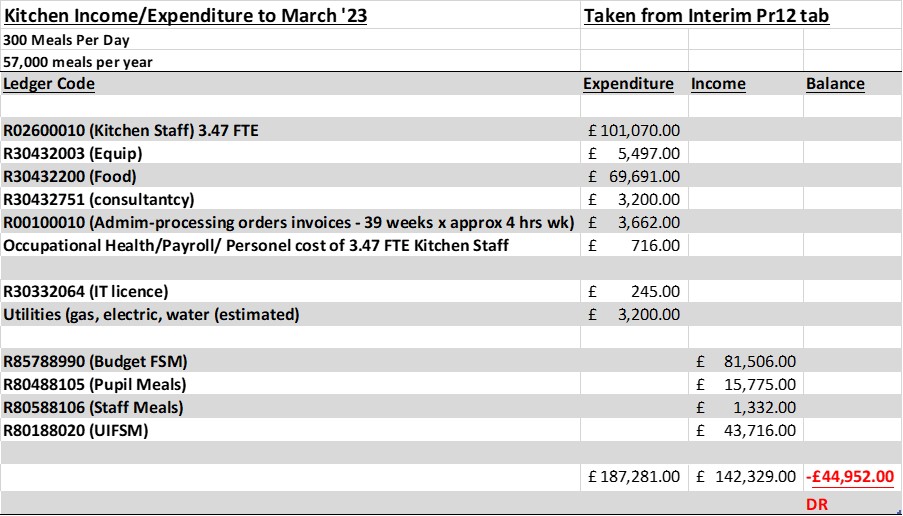Celebrating Our New Lead Schools for Music Education in Cheshire West and Wirral
On Thursday, 26th June, Edsential proudly welcomed six schools from...30 Jun 2025

Setting – A large primary school that serves 300 meals per day and has a high level of free school meal pupils. The headteacher and school business manager were interviewed. The school’s financial data was provided for financial year 22/23, along with historic data tracing performance since UIFSM was introduced in 2014.
When asked to give advice to schools considering taking catering in-house the Headteacher stated:
“If you are going to do it you need to have a higher purpose than saving money, because you won’t. It is more expensive; you simply cannot be as efficient. We are a large school, yet we lose £40,000 per year, it costs us about £3.30 per meal. That wasn’t always the case, we did used to make a surplus; but costs have risen much faster than the UIFSM meal price, that pushed us into a deficit even before Covid. The massive increase in food costs this year have been particularly hard to deal with.”
This headteacher stated that their purpose was to make the school central to tackling community food poverty but understood that role came at a cost to the school budget.
“The biggest challenges are obviously the staffing and the food; wait, did I mention OFSTED? If you do cater in-house, it forms part of the inspection, if you have an outside provider, it doesn’t. By taking on catering you are basically setting yourself up as a business, a restaurant that serves 300 customers per sitting, that’s not a small restaurant! You are taking on all of the issues that come with managing lots more staff, who do something you are not an expert at.”
The headteacher explained that the time and cost involved in recruiting, training and performance managing staff was the school’s responsibility. Also managing absence was a problem, if someone was ill then they had to rapidly fill in on the day using teaching assistants who had been food hygiene trained (removing them from the classroom) or reaching out to a retired cook who was always willing to help.
“The budget risks are high, we buy insurance for sickness but that only starts after three days. But the biggest worry is managing food allergies, it is challenging enough when you have everyone in, but you need to make sure that the process is still robust when there’s absence, inexperienced people make mistakes.”
The sole responsibility for ensuring food allergies were managed correctly was now their responsibility, legally as well as morally.
“You are always aware that if, god forbid, a child was given the wrong food it is one of the few instances where you will be in court defending your actions, were your processes and staff training adequate?”
The school business manager suggested that the administration of the food buying was a close second in terms of time consumed,
“We employ someone to help with the admin, but managing and checking invoices takes up a lot of my time too. We now have fifteen different delivery trucks per week – each needs unloading, checking, invoicing and paying. The headteacher also spends time every week checking expenditure because it can run away from you if you don’t keep a very close eye on it. Particularly during the last year with all this inflation.”
The headteacher concurred, “A lot of time is taken up that extends your day, if you didn’t put in the extra hours it would impact on what you are here to do – make sure the children’s learning outcomes are the best they can be.”
The headteacher and business manager provided the following advice for schools thinking about going in-house:
Budget report for financial year 22/23


Historic catering performance
